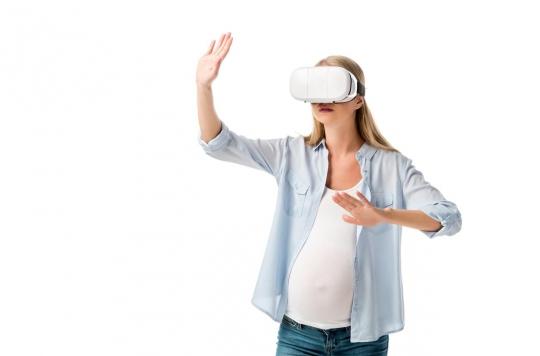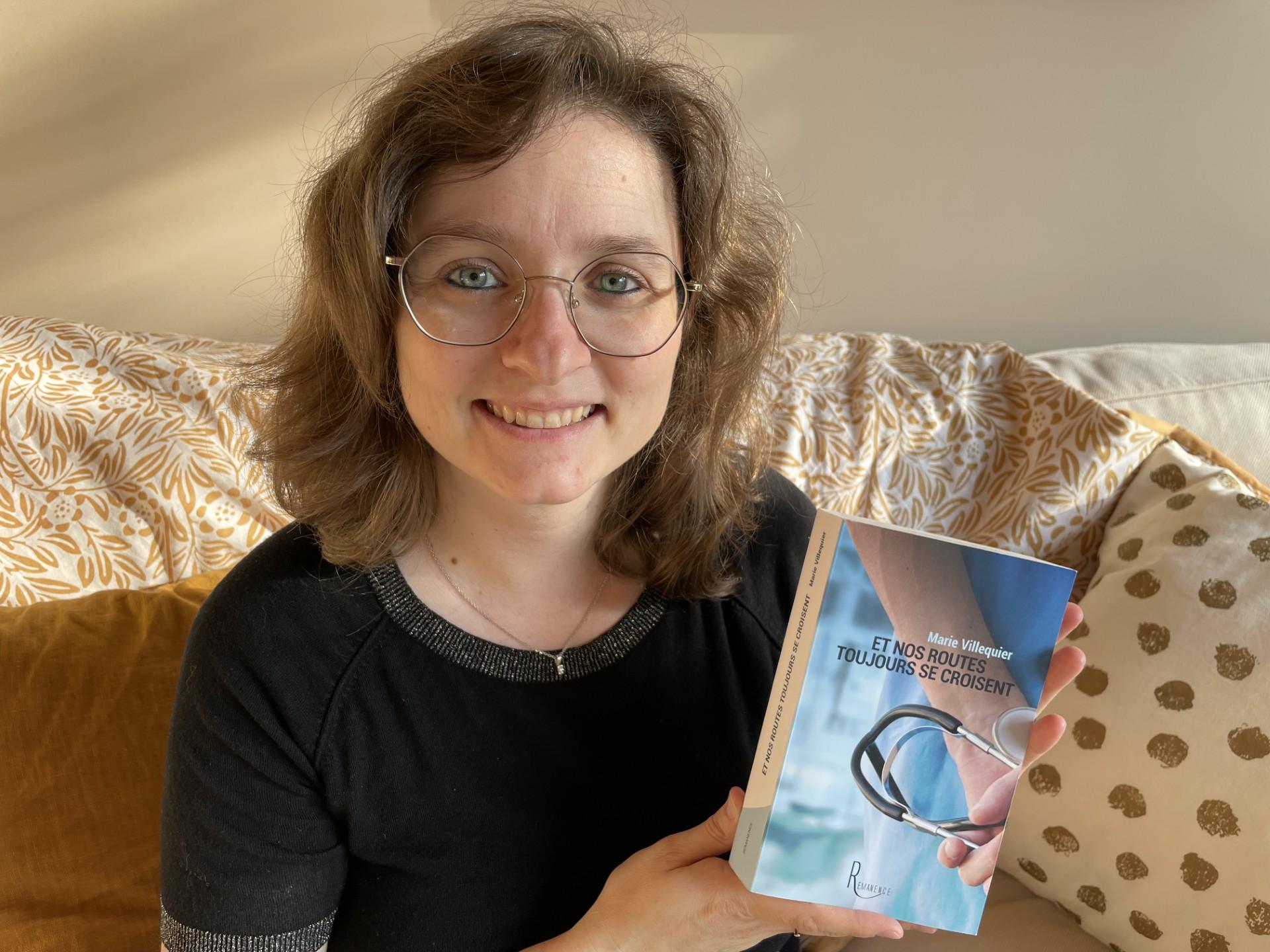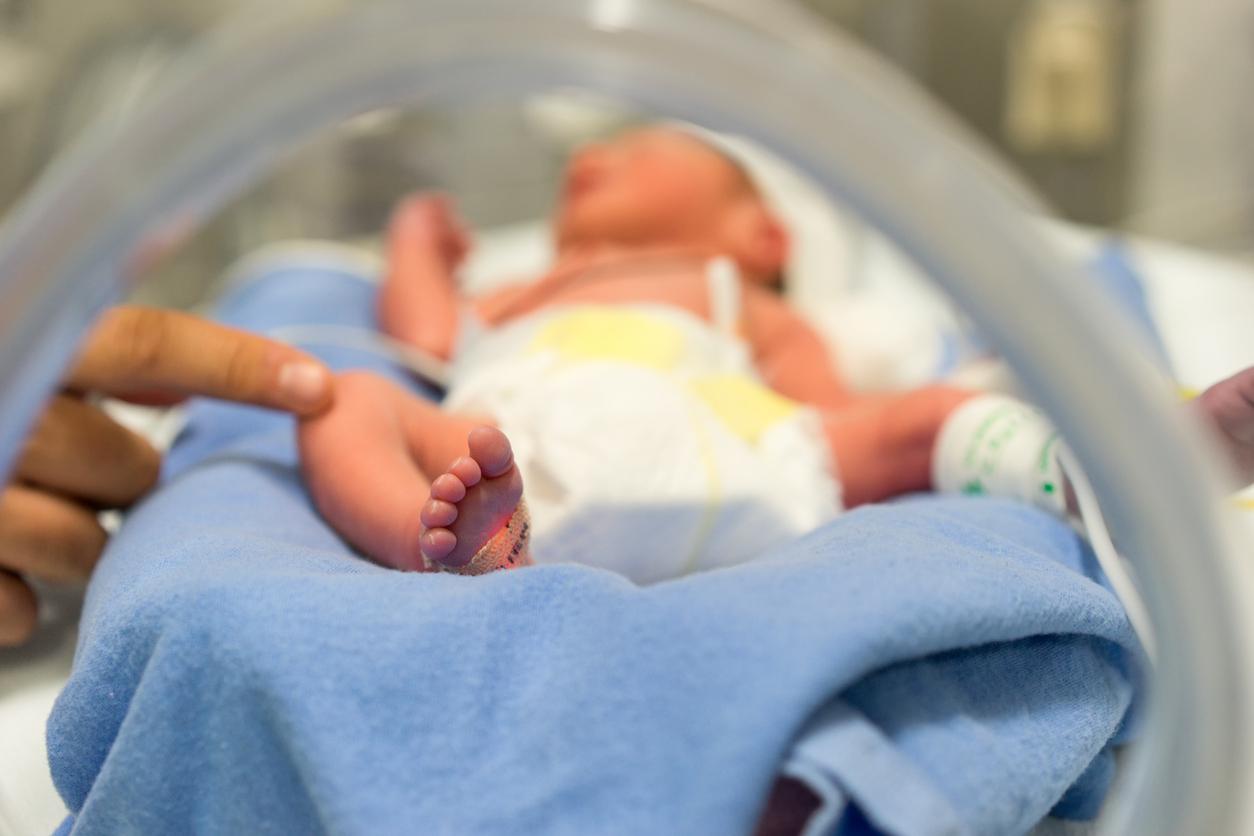In Great Britain, researchers are testing the usefulness of virtual reality headsets to relax women about to give birth.

Dolphins swimming in turquoise waters, the northern lights… What if pregnant women saw these heavenly images when giving birth instead of the scary white walls of the hospital? This is what the University of Wales is testing on women about to give birth. If his trial proves conclusive, this technique could be extended to the entire region.
“Even if it was helpful at the very beginning and then you decide to be more present or try something else, I think it’s good. Even if it only helps for half an hour, it is a good thing”, testifies Hannah Lelli at the BBC. The mum-to-be tested the kit before the birth of her first born in August and describes herself as “a big fan”. “It helps me relax (…) It may not be for everyone, it may not be for all stages of labor, but I think it is an alternative”, she adds.
“It gives us the opportunity to do something really different, something innovative, something that isn’t used elsewhere. It’s a great opportunity, especially for women in early labor, to try to help them breathe and relax and take them out of the moment,” said Ms Hardacre, midwifery manager for Cardiff and Vale Health Council.
4,300 euros per helmet
“For things like early childbirth, we can currently offer water, breathing and relaxation (…) Virtual reality brings another dimension to that”, she continues. According to her, this tool could also be used on women who have had traumatic childbirth experiences.
The hospital’s board of health is due to meet soon to assess the reaction of the first group of mums-to-be. “It’s going to be very interesting to see the return of women using this during childbirth. For some they will want to be more present and not want this distraction while others will need it and of course it provides an alternative medication to ease the pain,” says Hardare.
The cost of such an operation amounts to approximately 4,300 euros per helmet each year. The virtual reality headset “slowly moved out of the gaming arena into therapies,” says Glenn Hapgood, co-founder of Rescape Innovationa company that describes itself as a pioneer in the use of virtual reality to solve problems in the field of health.
“A very easy solution to have”
“A hospital stay is never pleasant. So even if you look at it from a therapeutic point of view, just getting people away from the uncomfortable environment they’re in-that’s a very easy solution to have”, he explains.
Not long ago, a study by Cedars Sinai Hospital in Los Angeles showed that 57% of women who used virtual reality headsets during childbirth had less pain. However, according to Dr. Melissa Wong, the chief obstetrician-gynecologist at Cedars Sinai, the virtual reality experience has more to do with giving birth.
Thus, his medical team came up with the idea of developing a different scenario. The women are taken to a beach until a campfire is gently lit on the ground. At the same time, a pink tree resembling a placenta blossoms. “We wanted images to help a person go into relaxation mode but also to help them stay connected to the experience. We don’t want them to forget that they are about to have a child, they need to bond with them, bond with the baby, imagine what the baby is going through, visualize what the body is doing. It’s not escapism, it’s taking it a step further in your own experience,” Wong concluded.
.















